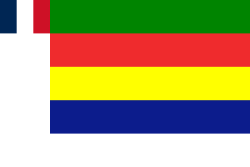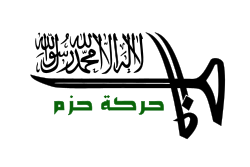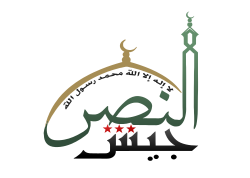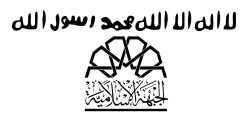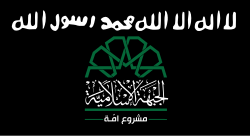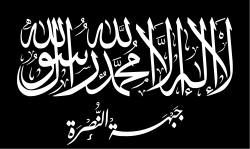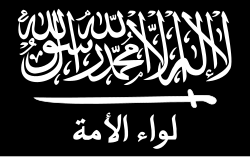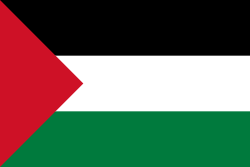| Flag | Date | Use | Description |
|---|
 | 10 October 2015–present | Flag of the Syrian Democratic Forces | Light yellow background with the map of Syria (Including the disputed Hatay Province) with the Euphrates river as well with the text below it, "قوات سوريا الديمقراطية", and "Hêzên Sûriya Demokratîk", and "ܚܝ̈ܠܘܬܐ ܕܣܘܪܝܐ ܕܝܡܩܪܛܝܬܐ" all translating to the Syrian Democratic Forces. |
 | 2011–present | Flag of the People's Defense Units | Yellow banner with a green outline with a red star with a green outline in the middle containing the letters "YPG" on the left, right, and bottom of the star, respectively. |
 | 2011–present | Flag of the YPG International | Yellow banner with a green outline with a red star with a green outline and a black stripe behind it with the white text in the middle of the red star "YPG" and on the black stripe the white text being "Enternasyonel". |
 | April 2013–present | Flag of the Women's Protection Units | Green banner with a yellow outline with a red star with a yellow outline with the yellow text "YPJ" on the right, bottom, and left of the star, respectively. |
 | 2003–present | Flag of the Democratic Union Party | |
 | 2011–present | Flag of the Movement for a Democratic Society | |
 | ?–present | Flag of the Al-Sanadid Forces | |
| ?–present | Flag of the Seljuk Brigade | |
 | 2014–2018 | Flag of Liwa Thuwar al-Raqqa | |
 | 2013–present | Flag of the Syriac Military Council | |
 | ?–present | Flag of the Syriac Military Council | |
| 2019–present | Flag of the Martyr Nubar Ozanyan Brigade | |
| 2019–present | Flag of the Martyr Nubar Ozanyan Brigade | |
| ?–present | Flag of the Manbij Military Council | |
 | ?–present | Flag of the Euphrates Liberation Brigade | |
| ?–present | Flag of the Al-Bab Military Council | |
| ?–present | Flag of the Jarabulus Military Council | |
| ?–present | Flag of the Deir ez-Zor Military Council | |
| ?–present | Flag of the Serê Kaniyê Military Council | |
| ?–present | Flag of the Tal Abyad Military Council | |
| ?–present | Flag of the Asayish | |
 | ?–present | Flag of the Self-Defense Forces (NES regions) | |
 | ?–present | Flag of the People's Defence Forces | |
 | ?–present | Flag of the Free Women's Units | |
 | 2014–2015 | Flag of the People's Liberation Faction | |
| ?–present | Flag of the International Freedom Battalion | |
 | 2005–present | Flag of the Kurdistan Workers' Party | |
 | ?–present | Flag of the Marxist–Leninist Communist Party (Turkey) | |
 | ?–present | Flag of the Communist Party of Turkey/Marxist–Leninist | |
 | ?–present | Flag of the Liberation Army of the Workers and Peasants of Turkey | |
 | ?–present | Flag of the Maoist Communist Party (Turkey) | |
 | ?–present | Flag of the United Freedom Forces | |
 | ?–present | Flag of the Marxist–Leninist Armed Propaganda Unit | |
 | ?–present | Flag of the Revolutionary Communard Party | |
 | ?–present | Flag of Türkiye Devrim Partisi | |
 | ?–present | Flag of Sosyal İsyan | |
 | ?–present | Flag of Kadın Özgürlük Gücü | |
 | ?–2017 | Flag of Devrimci Karargâh | |
 | 2014–present | Flag of the Marxist–Leninist Party (Communist Reconstruction) | |
 | ?–present | Flag of the Communist Labour Party of Turkey/Leninist | |
 | ?–present | Flag of the Revolutionary Communard Party/Birli | |
 | ?–present | Flag of the Revolutionary Union for Internationalist Solidarity | |
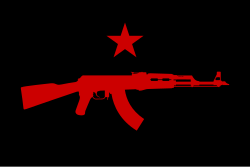 | ?–2018 | Flag of the International Revolutionary People's Guerrilla Forces | |
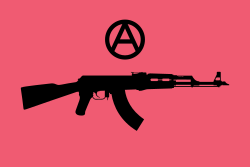 | ?–2018 | Flag of the Queer Insurrection and Liberation Army | |
 | ?–present | Flag of the Bob Crow Brigade | |
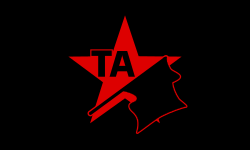 | 2017–present | Flag of the Anarchist Struggle | |
 | ?–present | Flag of the Henri Krasucki Brigade | |













































